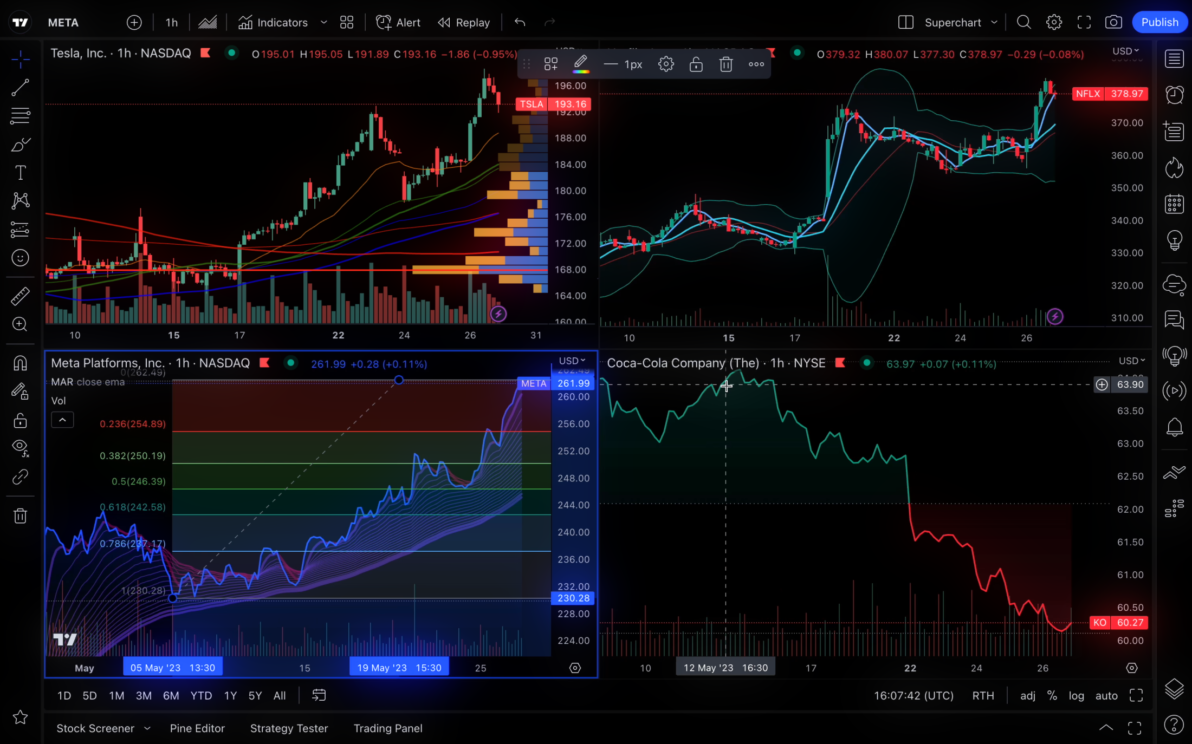Trading vs Investing: Key Differences for Beginners

Trading vs Investing: Key Differences for Beginners
If you’re new to the world of finance, one of the first things you’ll encounter is the distinction between trading and investing. While both approaches involve engaging with financial markets, they represent very different strategies, goals, and risk profiles. Understanding these differences is crucial for any beginner looking to grow their wealth over time.
In today’s interconnected financial landscape, individuals can access a wide range of asset classes simultaneously. This includes traditional investments like stocks and bonds, as well as newer opportunities like cryptocurrencies. But before diving in, it’s important to decide whether trading or investing suits your goals.
Investing: Building Wealth Over Time
Investing is often seen as the more conservative, long-term approach. Investors typically buy assets with the intention of holding them for months, years, or even decades, allowing their value to grow steadily over time.
Here are the core principles of investing:
- Long-term view: Investing usually focuses on a time horizon of years, not days or months. This allows assets like company shares or government bonds to grow in value.
- Buy and hold strategy: Investors aim to accumulate quality assets and hold onto them, even during short-term market dips. The idea is that, over time, the market tends to trend upward.
- Research and quality assets: Investors put time into researching companies or assets with strong growth potential. This could be well-established entities like S&P500 companies, AAA-rated bonds, or tangible assets like gold.
- Dollar-cost averaging (DCA): One popular investing strategy is DCA, where you invest a fixed amount regularly, regardless of the asset’s price. This smooths out the impact of volatility and helps build wealth gradually.
- No leverage or borrowing: Investors use their own capital to buy assets, without borrowing or using margin. This reduces risk but also limits the speed of potential gains.
- Asset ownership: Investing is often about owning the asset outright. When you buy stocks, for instance, you’re buying a piece of the company, giving you certain rights as a shareholder.
One of the appeals of investing is that it suits individuals looking for steady, long-term returns without taking on too much risk. For example, an investor in their twenties may focus on building a diversified portfolio that can generate returns over the next 30-40 years, preparing for retirement.
Investing is a topic that deserves further exploration. In future articles, we’ll dive deeper into specific strategies like index investing or dividend investing, and how you can create a portfolio that matches your financial goals.
Trading: Seeking Short-Term Profits
Trading, by contrast, is about taking advantage of short-term price movements. Traders might hold assets for only a few minutes, hours, or days, aiming to profit from quick changes in the market.
Key aspects of trading include:
- Short-term view: Traders work on much shorter time frames compared to investors. Their aim is to buy low and sell high (or vice versa) in rapid succession.
- Speculative nature: Trading is often speculative, with traders focusing on short-term trends or patterns rather than the long-term growth potential of an asset.
- Variety of strategies: Trading is diverse. From swing trading (buying and holding for several days) to day trading (making multiple trades within a day), there are countless strategies to suit different market conditions.
- Smaller capital, higher risk: Trading typically involves smaller amounts of capital, but with higher risks. Traders often use margin—borrowing money to increase their market exposure, which can amplify both gains and losses.
- Bi-directional opportunities: Unlike investing, traders can make money whether the market goes up or down by taking long or short positions.
- Technical analysis: Traders rely heavily on tools like charts, indicators, and algorithms to identify trends. This is in contrast to investors, who focus more on a company’s fundamentals.
- Quick returns: While investing is often a slow process, trading offers the potential for high returns in a short period of time. However, it’s important to note that trading carries significant risks, and many beginners underestimate the potential for losses.
Trading might sound appealing due to the potential for quick profits, but it requires a significant amount of time, focus, and experience to do it successfully. We’ll explore trading strategies for beginners in a future article to help you get started.
Risk Management: The Key to Success
Whether you’re trading or investing, one concept that should always be at the forefront is risk management. Both approaches come with risks, but they differ significantly in scope:
- Investing risk: The risks associated with investing tend to be lower over the long term, especially if you’re investing in a well-diversified portfolio. The market has historically recovered from downturns, but you’ll need patience.
- Trading risk: Trading is inherently more volatile. Since trades happen in short time frames, the market’s unpredictability can lead to quick losses. Using stop-loss orders and limiting your exposure through proper risk management techniques are essential for traders.
If you’re new to financial markets, consider starting with paper trading (trading in a simulated environment with no real money) to practice strategies before committing actual funds. This is especially important for trading, where losses can accumulate quickly.
Blending Trading and Investing
Interestingly, many individuals don’t see trading and investing as mutually exclusive. In fact, some combine both approaches:
- Invest for the long term: Keep a core portfolio of diversified investments that will grow steadily over time.
- Trade with a small portion: Use a smaller percentage of your capital to trade on short-term trends, experimenting with different strategies while limiting potential losses.
This dual approach allows you to benefit from both long-term growth and short-term opportunities without putting your entire capital at risk.
Conclusion
Choosing between trading and investing depends largely on your financial goals, risk tolerance, and the time you can dedicate to managing your portfolio. If you’re looking for steady, long-term growth and have a higher capital base, investing might be the better route. On the other hand, if you prefer fast-paced environments, are willing to take on more risk, and have the time to monitor markets regularly, trading could be for you.
*BrokerSuperMarket does not provide financial advice or guarantee financial results. Always evaluate your financial situation before making decisions.
February 14, 2025 05:07:00am
TradingView is a highly popular financial charting platform that caters to trade...
September 07, 2024 18:19:52pm
The energy industry remains crucial to the global economy, with traditional sect...








 en
en es
es